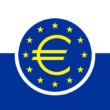Play in Our Sandbox: Why Galileo Processing Opened Its APIs to All
By Clay Wilkes, Galileo
At Galileo, we’re always amazed by the incredible ideas and creativity of the payments community. Almost every day of the 15 years we’ve operated as a payments company, clients and industry colleagues have astounded us with their ideas for expanding the boundaries of payments and their visions of what’s next. And, for years, working within the confines of payments technology and regulation, we’ve grappled internally with how Galileo can enable these big thinkers to transform their creativity into marketable commercial products.
All the while, the payments community has exploded with new entrants. Countless fintechs, unencumbered by legacy systems and the ultra-cautious bank mindset, have taken the payments world by storm, filling a service culture gap that traditional financial institutions largely failed to see coming. These new businesses have challenged traditional FIs to do payments better and to offer new products and touch points, along with completely new customer experiences. And, recently, FIs have gotten the message—buying or partnering with fintechs or, if they’re big enough, creating their own fintech think tanks.
Tech has evolved, too, with APIs, in particular, enabling fintechs and FIs to take back significant functionality (e.g., hosting websites, and creating and loading accounts) that companies like Galileo used to be asked to provide. The inclination for fintechs, especially, to do more on their own is understandable: They want primary control over the all-important customer experience—their key differentiator and competitive advantage—and they don’t want extra layers between themselves and that experience.
The Leap to Open APIs
Like any tech company, Galileo is no stranger to APIs, which are a set of commands or an interface used to call up the underlying functionality. We’ve offered our rich APIs to our contracted clients for years. Five years ago, 40 to 50 percent of our clients were coding to our APIs. By the end of 2016, that percentage was more than 90.
Although that percentage is impressive, it masks a key constraint; that is, we didn’t provide access to our APIs until after a party had signed an NDA and executed a contract with us, resulting in months of delay. We wanted to significantly accelerate this time frame.
This led to the decision to open our APIs to anyone with legitimate reasons to access them, like clients, fintechs, FIs, students and freelance developers—pretty much anyone. It was an important decision, and we needed to get comfortable with the concept—particularly relating to the security of our data and operation, which we take extremely seriously. We knew, however, that we had the richest suite of APIs and the most extensive underlying functionality, which is what matters in allowing anyone to unleash their creativity to develop the financial products from the outreaches of their imagination.
In May, we added a link to our website enabling anyone to request access to our APIs.
Test Flights and the Sandbox
Opening APIs isn’t complete without a sandbox where developers can, literally, play with their creations. Any organization—whether it’s a large bank or two guys in a garage—can code to our APIs and test concepts at various stages of development. What goes on in the sandbox perfectly simulates Galileo’s live operating environment but is completely separate from our production system, so anything that goes on in the sandbox is totally isolated.
Our sandbox includes a tools to authenticate users, administer users of various groups and, most importantly, see published APIs (complete with full interface specifications) and click on one of several popular programming languages to create the custom code fragment for that API method or function, personalized with the developer’s credentials. Sandbox visitors also can see API traffic flow between their application and Galileo.
Although we’re only several months into our open environment, several trends are shaping up. We see businesses that spend time in our sandbox are much more likely to elevate their discussions with us to the next level—and to move faster. And, the time between when a client contracts with us until it goes live is reduced because its developers were gaining valuable hands-on experience while business arrangements were being finalized.
Limitless Creativity
Opening the most advanced platform in payments through our APIs and creating a sandbox where developers can create and experiment to their hearts’ content is putting our money where our mouth is in terms of our commitment to creativity in the payments industry. What I’m hoping to see in the near term are examples of tremendous creativity in financial services as more developers find their way to our open APIs and sandbox, and begin to see what it’s like to code without restraint.
Clay Wilkes is CEO of Galileo, a payments technology company based in Salt Lake City. For more information about its sandbox, visit https://galileoprocessing.com.
In Viewpoints, payments technology professionals share their perspectives on the industry. Paybefore presents many points of view to offer readers new insights and information. The opinions expressed in Viewpoints are not necessarily those of Paybefore.








































